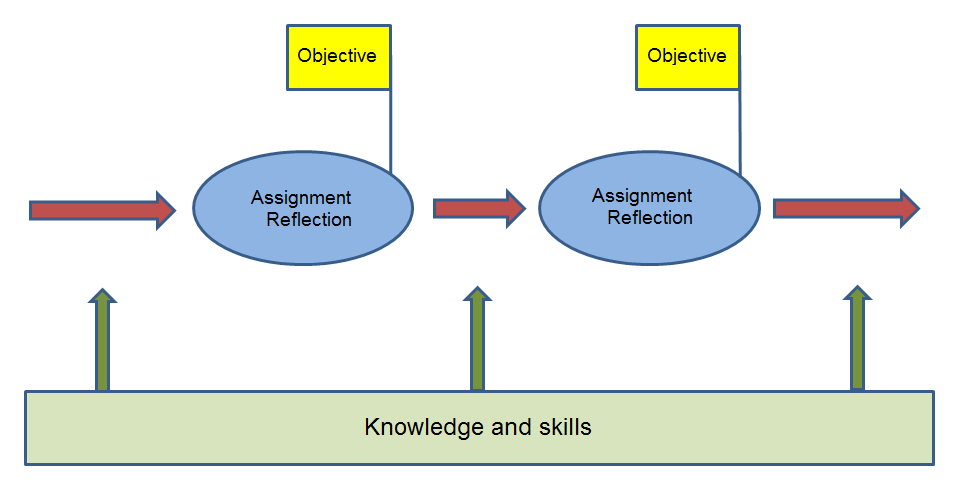3. Modelling learning path
3.1 Design
Below we describe a modelling learning path derived from the research of Onne van Buuren.1 The overall learning objective is to meet the learning goals of the school curriculum. For each modelling cycle, the learning steps are clear and the learning objectives are limited and appropriate to the level of knowledge and skills of the students.

Fig 3.1. A sequential modelling learning path
Modelling requires a lot of knowledge and skills, and it takes time and effort to master it. This holds for both students and teachers. Important points of attention for the teachers in modelling assignments are:
- Good preparation.
In the first place, a good preparation for modelling assignments is essential. When students miss a part of the required knowledge and skills, a modelling task is soon complicated and one is confronted with wasting of time and frustration. - Limit the learning goals.
The greatest pitfall to avoid in modelling education is that of too sophisticated modelling assignments with too many and widely divergent learning goals. Distinguish between ‘thinking in’ - and ‘working with’ models; see Didactics of modelling. - Start in lower secondary education.
Start early with the learning path, preferably in the second year of secondary education (age: 13-14 years); see Levels of modelling. Learning modelling can then be practiced over several years. One is advised to use ‘model language’ from the beginning in the lessons: firstly, the word ‘model’ itself; in addition, naming the relationship between models and the reality, and naming model construction and evaluation. - Repeat and reflect.
An investment in modelling is only worth the effort when modelling is dealt with in several subjects. Modelling assignments must be repeated in the curriculum and students must be encouraged to reflect on previous modelling activities. - Support development of models.
In order to meet the achievement levels of the examination2,3 the modelling learning path should not only be an implementation of computer modelling. Apart from the exam requirements, developing models can be done better without a computer, with emphasis on the graphical representations of elements and processes. Considerable attention must be paid to the physically correct and relevant model representation, including the assumptions made, so that students can gradually make the step from concrete to abstract.4
Students' learning of Thinking in models requires in the first place that the teachers start thinking in terms of models and explain with models. The main motivation is to give students more insight into the way in which scientific knowledge is developed in research and how the reliability of this knowledge can be assessed.2,3 Emphasis is on the way of thinking in natural science and mathematics, more than on specific principles and concepts.